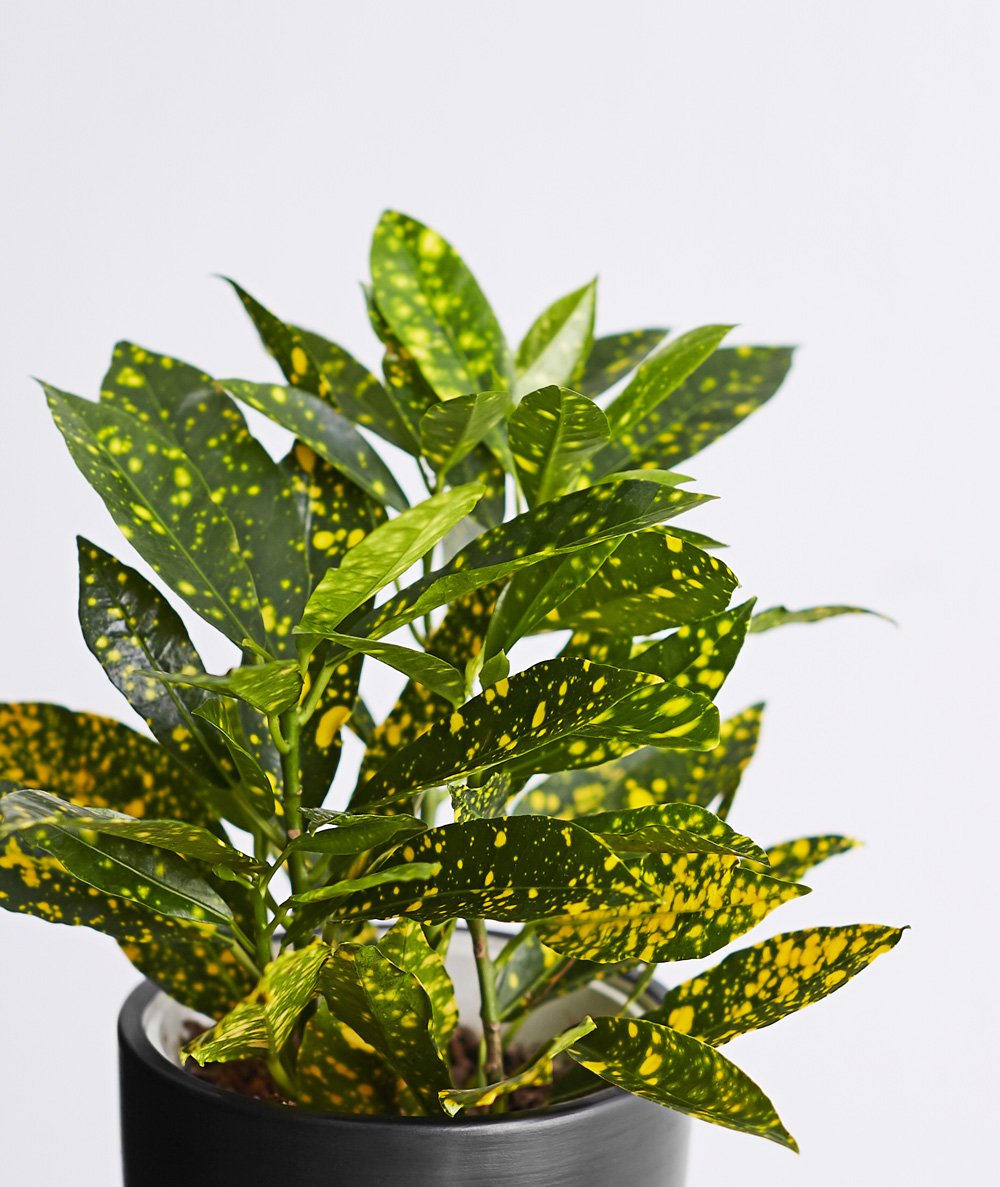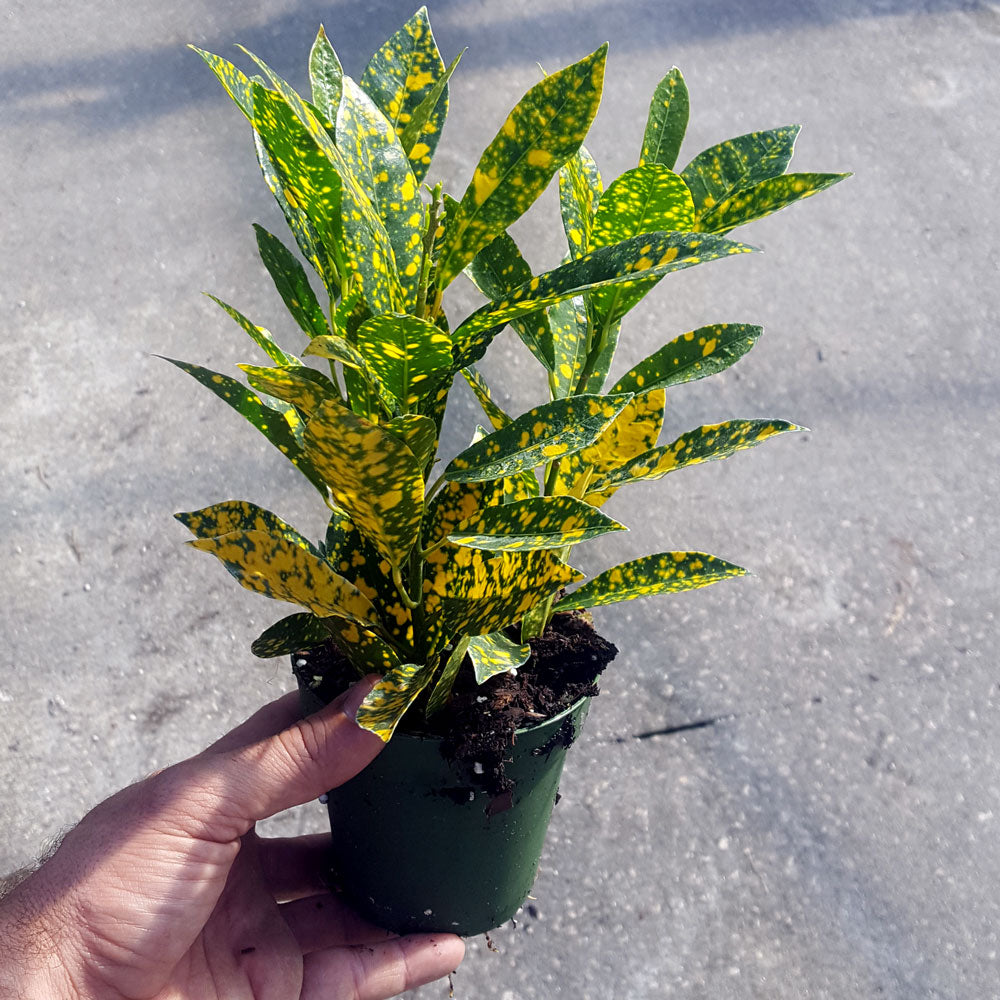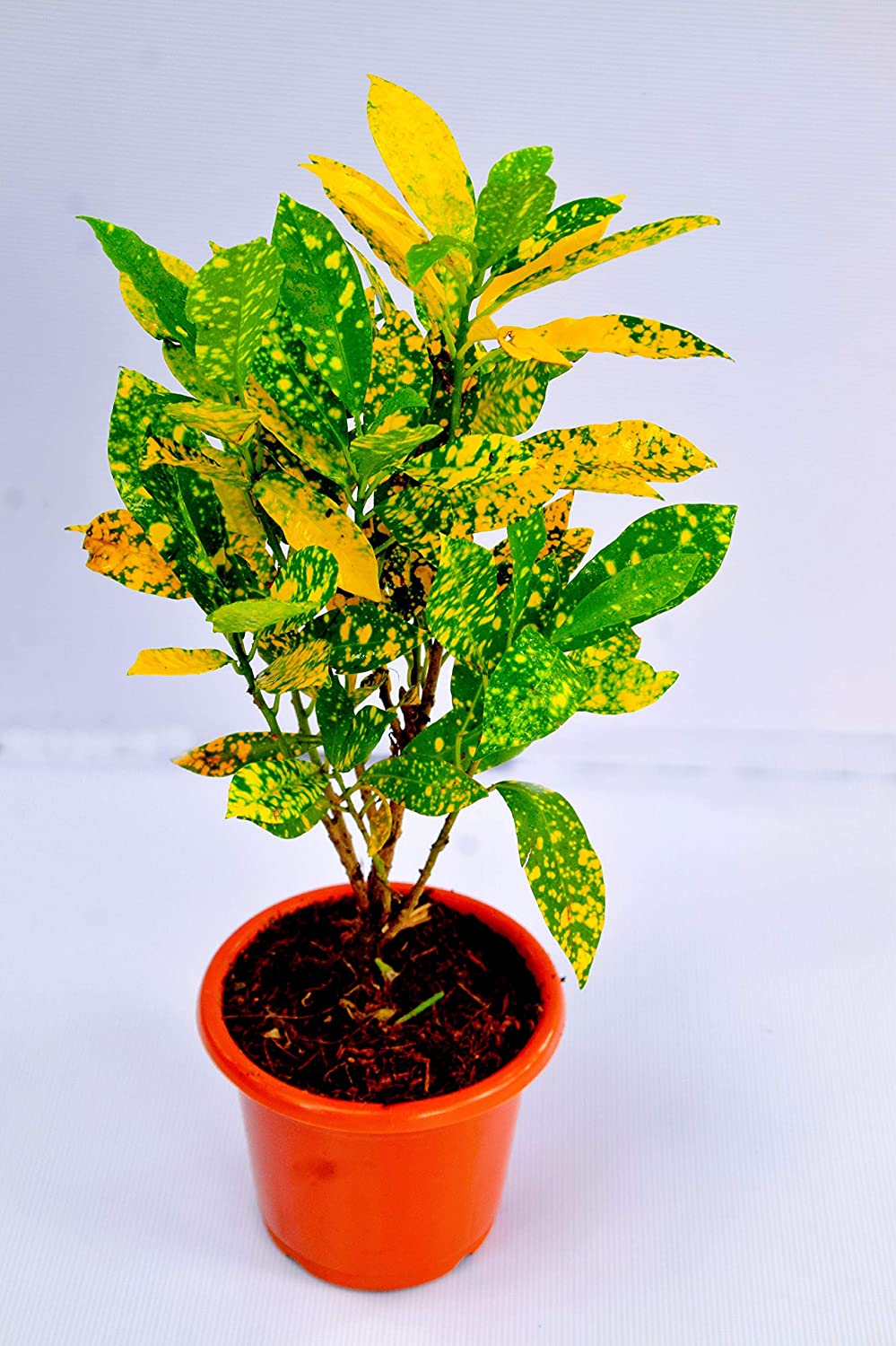Gold Dust Croton Care: How To Grow Codiaeum Variegatum
Gold Dust Crotons or Codiaeum variegatum [koh-dih-EE-u, koh-dih-EE-u] is a subtropical, evergreen shrub, naturally occurring in Indonesia, southern Asia, and Eastern Pacific Islands.
A part of the Euphorbiaceae family, Croton plants are known for their showy, shiny bright leaves.
Size & Growth Rate
In its native habitat, the gold dust plant grows at a medium pace up to 10’ feet in height.
Cultivated species grow at a slower rate and are smaller in size at around 24” inches.
Meanwhile, greenhouse species may reach a height between 4’ – 10’ feet tall.
Flowering and Fragrance
Even though the leaves of croton plants are its biggest attraction, it does bloom.
The flowers are insignificant and easy to miss as they hang in long clusters between large leaves.
The long racemes are 3” – 12” inches long with tiny male and female flowers on separate inflorescences.
The male flowers have five white small petals, while the female flowers are yellow with no petals.
Light Requirements and Temperature
Bright light causes the croton gold dust plant to produce brightly colored leaves.
When planted outdoors, they enjoy the partial shade for several hours during the day.
Direct sunlight from the full midday sun can damage the plant.
Being subtropical plants, Gold Dust Crotons require higher humidity levels.
Mist the plants frequently, especially when potted and used indoors.
Or plant the crotons outdoors near a body of water for optimal growing conditions.
The croton plant is hardy to USDA Zones 10 and 11 and prefers temperatures between 60° – 85° degrees Fahrenheit (15° – 29° C).
When the temperatures start dipping below 50° degrees Fahrenheit (10° C), it is best to move the croton gold dust indoors.
Watering and Feeding
During the growing season, watering should be regular to keep the soil moist.
Avoid overwatering as the plant does not respond well to standing water. When growing in pots always use a container with drainage holes.
Feeding should also be regular during this period.
Weekly fertilization with a balanced formula fertilizer is sufficient. More tips on Croton fertilizer.
Occasional feeding with an acidic formula fertilizer designed for azaleas may also benefit the plant.
Cut back both watering and feeding when winter rolls around.







Reviews
There are no reviews yet.